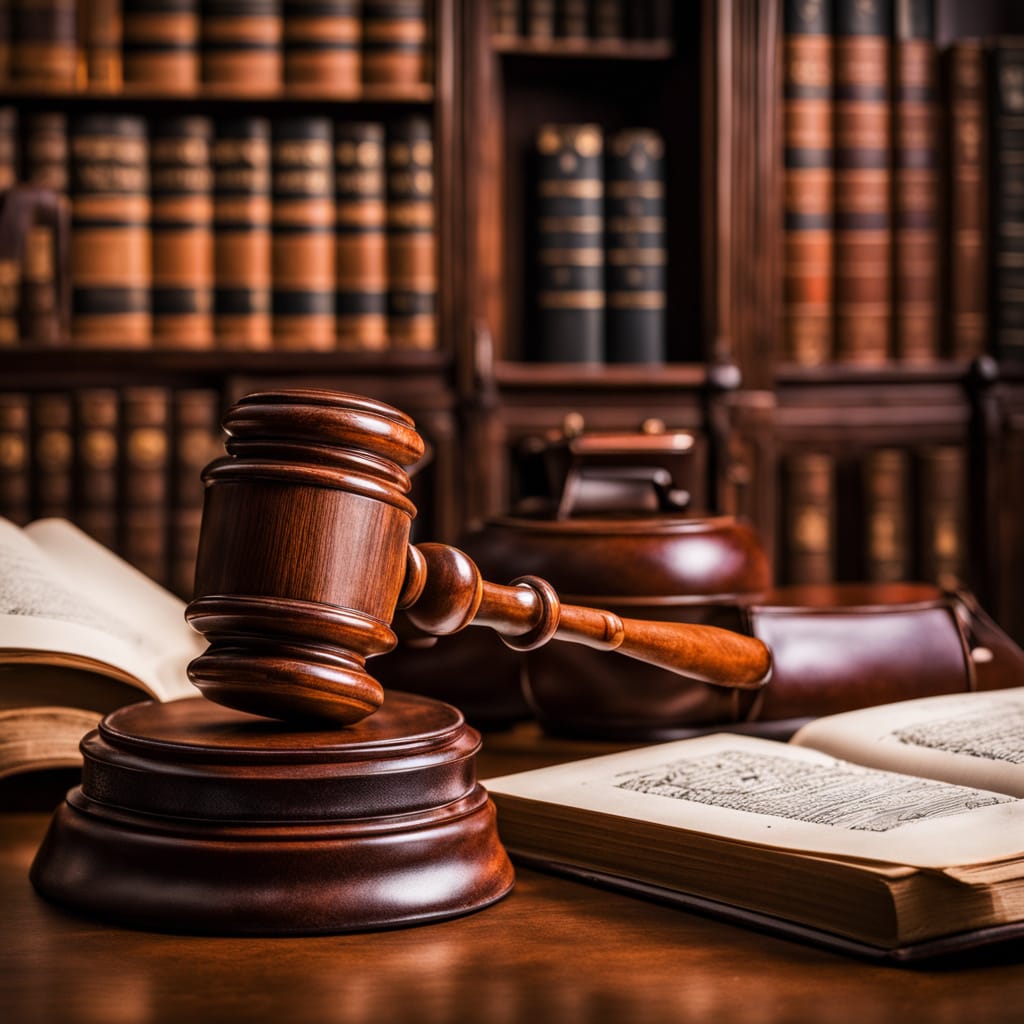Sports Governance
The Comprehensive Guide to Sports Governance: Past, Present, and Future

Sports have long held a significant place in human society, bringing people together and fostering competition. However, behind the scenes of every game, match, or tournament, there exists a complex system of governance ensuring fairness, integrity, and regulation. Sports governance is a vast subject encompassing the organizations, policies, and structures that shape the way sports are played and managed around the world. This article delves into the origin of sports governance, the various governing bodies in professional and amateur sports, the process of regulation, and the future of this vital aspect of sports administration.
The Origin and History of Sports Governance
Sports governance has deep roots that trace back to ancient civilizations. Even in early sporting events, like the Olympic Games in ancient Greece, some rules and regulations governed participants and competitions. Though rudimentary, these guidelines were the early forms of what we now recognize as sports governance.
As sports evolved, especially with the advent of professional leagues in the late 19th and early 20th centuries, governance became more formalized. The need for impartial oversight grew as competitions expanded beyond local contests and began involving regional, national, and eventually global audiences. Standardized rules and guidelines became essential to maintain fairness, prevent corruption, and ensure the integrity of sports.
One of the most significant milestones in sports governance was the formation of international organizations, such as the International Olympic Committee (IOC) in 1894. The IOC played a pivotal role in establishing a universal code of conduct for athletes and administrators alike. Similarly, the Fédération Internationale de Football Association (FIFA), founded in 1904, became a crucial governing body for global football. These organizations were created to introduce structure, enforce rules, and resolve disputes, shaping the governance of sports into what it is today.
Governing Bodies in Major Professional Sports
In the realm of professional sports, governing bodies play an indispensable role. They establish and enforce rules, regulate player conduct, manage disputes, and ensure fair competition. Below are some of the key governing bodies in major professional sports across the world:
1. Football (Soccer) – FIFA
FIFA (Fédération Internationale de Football Association) is the global governing body for football. Established in 1904, FIFA manages international competitions, including the prestigious FIFA World Cup. It sets the rules for the game, known as the Laws of the Game, and works closely with continental organizations like UEFA, CONCACAF, and others. FIFA oversees millions of players and administrators, maintaining fairness and integrity in football across the globe.
2. Basketball – FIBA and NBA
Basketball governance is shared between FIBA (International Basketball Federation) for international competitions and the NBA (National Basketball Association) for the professional league in North America. FIBA, founded in 1932, regulates international basketball tournaments, including the FIBA Basketball World Cup and the Olympic Games. The NBA, founded in 1946, oversees professional basketball in the United States and sets the standard for basketball leagues worldwide.
3. American Football – NFL
The National Football League (NFL) is the governing body for professional American football. Founded in 1920, the NFL manages the most popular professional football league globally, controlling league rules, team regulations, player conduct, and financial governance. The NFL has a strong influence on the growth and regulation of American football at both professional and amateur levels.
4. Cricket – ICC
The International Cricket Council (ICC) governs international cricket, including formats like Test matches, One Day Internationals (ODIs), and Twenty20 (T20) matches. The ICC, founded in 1909, has 106 member nations and oversees global competitions such as the ICC Cricket World Cup. It ensures that cricket’s laws, established by the Marylebone Cricket Club (MCC), are upheld worldwide.
5. Tennis – ITF, ATP, and WTA
Tennis is governed by several bodies. The International Tennis Federation (ITF) manages international competitions like the Davis Cup and the Grand Slam tournaments. The Association of Tennis Professionals (ATP) governs the men’s professional tennis tour, while the Women’s Tennis Association (WTA) manages the women’s tour. These organizations ensure compliance with rules, maintain player rankings, and oversee tournament regulations.
6. Olympic Sports – IOC
The International Olympic Committee (IOC) is the governing body for the Olympic Games. Founded in 1894, the IOC organizes the Summer and Winter Olympic Games and oversees the development of various sports within the Olympic movement. It works in conjunction with international federations (IFs) that govern individual sports included in the Olympics.
Governing Bodies in Amateur and School Sports
Amateur and school sports, though often less high-profile than professional leagues, also require robust governance to ensure fair play and athlete safety. These sports operate under a different set of governing bodies that focus on grassroots development and youth participation.
1. National Collegiate Athletic Association (NCAA)
In the United States, the NCAA governs college sports, overseeing over 1,000 institutions across multiple divisions. The NCAA establishes eligibility rules for student-athletes, sets guidelines for recruitment, and organizes national championships. It plays a significant role in shaping the collegiate sports landscape, focusing on both the athletic and academic development of student-athletes.
2. International School Sports Federation (ISF)
The ISF, founded in 1972, is the governing body for school sports competitions at an international level. It promotes the value of sports among school-aged children and organizes events like the Gymnasiade, which bring together young athletes from different countries.
3. National Federations and State-Level Organizations
Every country has its national federations responsible for governing amateur and youth sports. For example, in the United Kingdom, the English Schools’ Football Association (ESFA) governs school football. In India, the School Games Federation of India (SGFI) organizes national school sports competitions. These organizations ensure that students have opportunities to participate in sports while adhering to rules that prioritize fairness and safety.
4. Olympic Movement and Youth Sports
The Olympic movement also extends to youth sports through initiatives like the Youth Olympic Games (YOG). These events, governed by the IOC, promote youth participation in sports while encouraging Olympic values such as friendship, respect, and excellence.
Regulation Introduction and Approval Process
The introduction and approval of regulations in sports follow a structured process, ensuring that changes are well-considered and beneficial to the sport. Typically, the process involves several key stages:
- Proposal Stage: Governing bodies or relevant stakeholders identify the need for a new rule or a modification to existing regulations. This could be in response to technological advancements, player safety concerns, or other issues affecting the sport.
- Consultation: Before regulations are finalized, consultations with key stakeholders, such as teams, players, coaches, and sometimes even fans, are conducted. This ensures that the perspectives of all those impacted are considered.
- Review and Approval: After consultations, the proposed regulation is reviewed by a committee within the governing body. In organizations like FIFA or the NFL, this might involve legal experts, referees, and representatives from different clubs or franchises.
- Implementation: Once a regulation is approved, it is communicated to all stakeholders. Governing bodies may set timelines for when the new regulation comes into effect, allowing time for adaptation.
- Enforcement and Monitoring: After implementation, governing bodies enforce the regulation through their referees, umpires, or other officials. Monitoring continues to ensure compliance, and periodic reviews may occur to assess the rule’s effectiveness.
Power and Influence of Governing Bodies
Governing bodies wield substantial power within their respective sports. They control key aspects such as:
- Rule-Making Authority: Governing bodies have the ultimate say in what rules apply to a sport. For example, FIFA’s control over football’s Laws of the Game is absolute, and any changes require its approval.
- Disciplinary Power: Governing bodies can sanction players, teams, or even entire nations for violating rules. The ICC, for instance, can ban players for match-fixing, while the IOC can strip athletes of Olympic medals for doping violations.
- Commercial and Financial Control: Many governing bodies control the commercial aspects of their sports. This includes the sale of broadcasting rights, sponsorship deals, and merchandise licensing. The NFL, for example, is a commercial powerhouse, generating billions in revenue annually.
Despite their power, governing bodies also face challenges. They must balance the interests of various stakeholders, including players, teams, sponsors, and fans. Moreover, scandals involving corruption or mismanagement can undermine their authority, as seen in FIFA’s recent controversies.
The Future of Sports Governance
Sports governance faces new challenges and opportunities as we move into the future. The growing influence of technology, the increasing importance of mental health, and the push for gender equality are just a few of the issues shaping governance today.
1. Technological Integration
Technology is transforming sports governance. Innovations like video assistant referees (VAR) in football, goal-line technology in tennis, and wearable tech in training are becoming mainstream. Governing bodies must stay ahead of these developments, ensuring that technology enhances fairness without compromising the sport’s integrity.
2. Mental Health and Athlete Welfare
As mental health awareness grows, governing bodies are under pressure to prioritize athlete well-being. Regulations regarding training loads, competition schedules, and access to mental health resources are likely to become more stringent in the coming years.
3. Gender Equality
Women’s participation in sports has increased significantly over the last few decades, but gender inequality persists. Governing bodies must continue to address disparities in pay, media coverage, and sponsorship opportunities to create a more equitable environment for female athletes.
4. Sustainability
The environmental impact of sports is becoming a growing concern. Governing bodies are beginning to implement sustainable practices, such as reducing carbon emissions during events and promoting eco-friendly stadiums. This trend is expected to grow as climate change becomes a more pressing issue.
Conclusion
Sports governance is a cornerstone of modern sports, providing the structure and oversight needed to ensure fair competition and protect the integrity of the games we love. From ancient Greece to the cutting-edge technology of today, governing bodies have evolved alongside sports, adapting to new challenges and opportunities. As the landscape of sports continues to shift, particularly with the rise of technology and social awareness, governance will play an even more critical role. Whether through global organizations like FIFA or local school sports federations, effective governance ensures that sports continue to unite and inspire people around the world.






